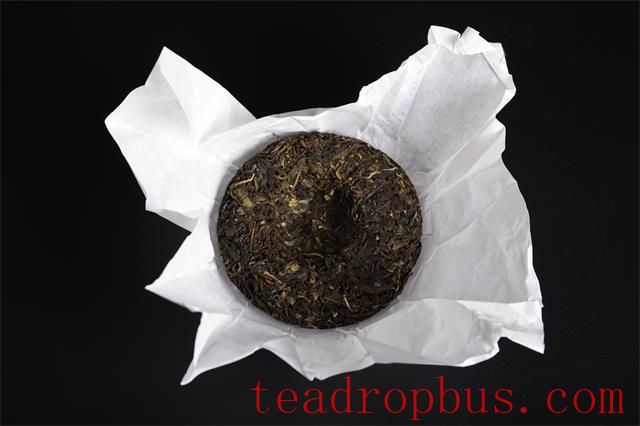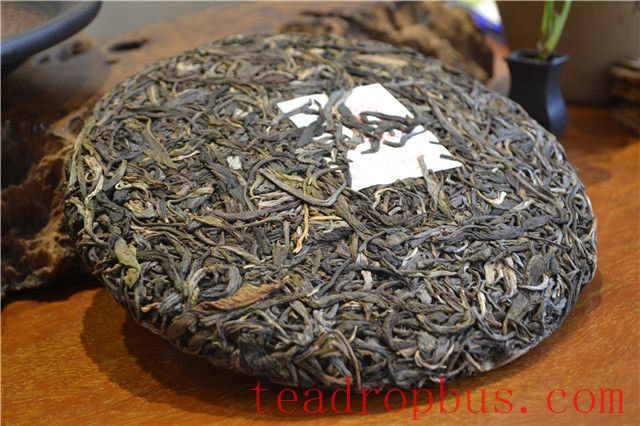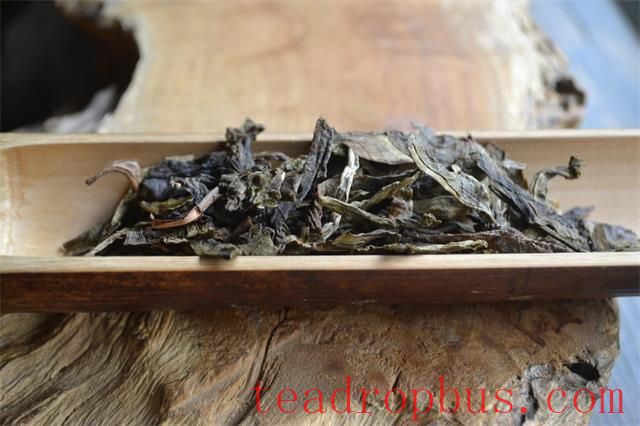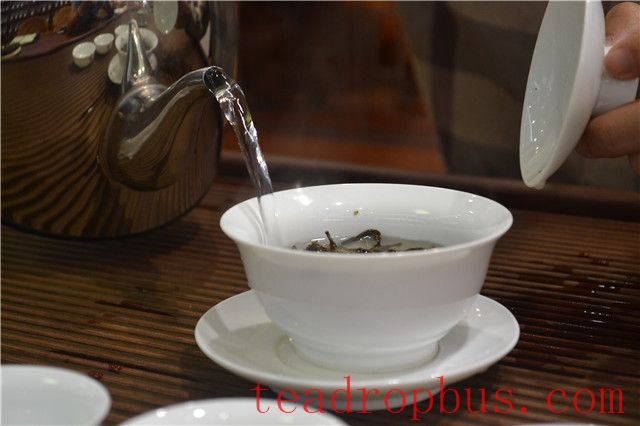Many Tea enthusiasts may have encountered this situation: when tasting tea at a shop or sampling purchased teas, the flavor seems quite good. However, once they buy and break up the tea at home, the aroma is subdued and the taste is less impressive. This doesn't necessarily mean that you've bought fake tea, but rather that an important step was missing – airing the tea.
Today, I will briefly discuss several techniques for airing Pu'er tea.

Why Air the Tea?
Just as red wine needs to be decanted, so does Pu'er tea need to be aired, especially for older vintages. During the airing process, the inherent character of the tea is gradually awakened. The tea, which was previously in a state of aging, comes into further contact with air and moisture, allowing it to release its contents more consistently during brewing. This eliminates unwanted flavors and enhances the drinkability and body of the tea, resulting in a better overall tasting experience.
Freshly made Pu'er tea usually requires years, even decades of storage. After long-term storage, the tea's inherent substances become more reserved, making it less easy to extract flavors during brewing. Airing the tea involves changing its storage method to awaken the tea's essence and concentrate its aroma, quickly elevating its quality to a higher standard.
Middle-aged and older teas are typically stored in low-oxygen, dry, and light-free environments, causing their internal substances to be less active. The aroma is insufficient, and the taste is relatively dull. After airing, off-flavors can be removed, and the thickness and body of the tea soup will significantly improve.

Dry Airing
There are many ways to air tea, one of which is “dry airing,” referring to the preparation before brewing.
The first step in dry airing is breaking up the tea cake. After taking out a single cake, use a tea knife or needle to carefully separate compressed cakes, bricks, or tuos along the direction of the leaf veins.
For raw tea, new teas and tuos are often compressed tightly. You can use a tea needle or knife to gently pry apart the tea from the side, breaking it into small pieces about the size of your thumbnail.
Aged raw teas and ripe teas tend to be less compact. They can usually be separated by hand, a technique referred to as “teasing apart.” Whether teasing or breaking, it's essential to maintain the integrity of the tea leaves, avoiding too many broken surfaces, which can lead to excessive water extraction and negatively impact the taste.
After breaking up the tea, many enthusiasts might place it directly into a tea jar. However, it's better to first lay it out naturally on clean, odorless, sun-free, and relatively dry paper to increase exposure to air. After two to three days, transfer the tea into a tea jar for two weeks to several months for optimal results.

When choosing a tea jar, purple clay is an ideal option due to its excellent breathability, light-blocking properties, and thermal insulation. These characteristics help keep the temperature and humidity inside the jar relatively stable, quickly concentrating the tea's essence and aroma while remaining odorless and dry.
It's crucial to emphasize that to allow a tea to reach its normal quality level and ensure an authentic taste, one cannot rush the airing process. The time required should be adjusted based on the tea's age. Adequate airing time is necessary to remove off-flavors and enable the tea to fully oxidize upon exposure to air, enhancing the activity of the tea's internal substances.
For new teas and semi-new teas aged three to ten years, airing for about a week is sufficient; for middle-aged teas aged ten to twenty years, the airing time can be extended to two to three weeks. For middle-aged and older teas over twenty years old, it's recommended to air them one month in advance for better results.
Wet Airing
The wet airing of Pu'er tea, also known as “infusing,” involves heating the Teapot and then adding an appropriate amount of tea. Pour boiling water over the tea, and after 3-5 seconds, discard the liquid. This not only warms the Teaware but also helps the tea expand and facilitates infusion. Allow the tea to rest for 10-30 seconds (adjust the resting time based on the tightness of the tea, the type of material used, and the age of the tea) to let the dry tea absorb the heat in the pot and wake up before the actual brewing.

For some older, precious raw teas, I'd like to share a specialized technique called “water roasting,” which is effective for quickly airing the tea, activating its character, and removing off-flavors. Here are the specific steps:
(1) Use a pear-shaped purple clay teapot, as its lid and vent are less likely to let water in, making it suitable for the water-based water roasting method.
(2) Adjust the amount of tea to be brewed. Without damaging the tea, break it down as finely as possible without creating too many breaks to enhance the effectiveness of water roasting.
(3) Prepare by heating water and warming the teapot. I typically use an electric ceramic stove with a Japanese cast iron kettle, which is convenient and provides good heat retention, ensuring consistent water temperature during brewing.
(4) Add the tea to the pot and cover it. The key step in water roasting is pouring boiling water over the pot, keeping the water stream moving uniformly around the pot. This process should be repeated about ten times.
(5) Once all the water has evaporated from the pot, carefully uncover it, holding the handle and gently shaking the pot to turn the tea, allowing any off-flavors to fully dissipate. Note that the pot will be very hot, so wear heat-resistant gloves if necessary.
(6) After shaking the pot, cover it again and repeat the steps of pouring boiling water and shaking the pot to disperse off-flavors. The entire process should be repeated about three times. After water roasting, proceed with regular brewing.
How to Determine the Degree of Airing?
Pu'er tea requires airing, but it shouldn't be overdone, as this can lead to excessive oxidation, loss of aroma, and bland taste. Particularly high-quality teas can be harmed if over-aired. Since different teas require varying lengths of airing, it's helpful to judge the degree of airing through tasting.
Assuming there are no issues with storage or processing, if the bitterness of the tea is too pronounced or it's difficult to distinguish the aroma, the tea is likely in a “closed” state and needs airing to release its aroma and improve its taste.
If, after a period of airing, the tea's taste changes pleasantly, the airing was successful. If the taste and flavor of the Pu'er tea do not improve much, it may indicate that the tea hasn't been aired enough and requires additional time.
